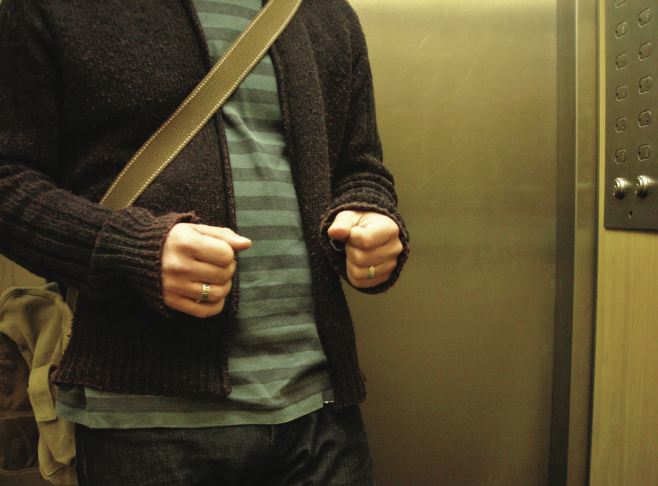34.4: Specific Phobia
- Page ID
- 77089
The majority of us might have certain things we fear, such as bees, or needles, or heights (Myers et al., 1984). But what if this fear is so consuming that you can’t go out on a summer’s day, or get vaccines needed to go on a special trip, or visit your doctor in her new office on the 26th floor? To meet criteria for a diagnosis of specific phobia, there must be an irrational fear of a specific object or situation that substantially interferes with the person’s ability to function. For example, a patient at our clinic turned down a prestigious and coveted artist residency because it required spending time near a wooded area, bound to have insects. Another patient purposely left her house two hours early each morning so she could walk past her neighbor’s fenced yard before they let their dog out in the morning.
The list of possible phobias is staggering, but four major subtypes of specific phobia are recognized: blood-injury-injection (BII) type, situational type (such as planes, elevators, or enclosed places), natural environment type for events one may encounter in nature (for example, heights, storms, and water), and animal type.
A fifth category, “other,” includes phobias that do not fit any of the four major subtypes (for example, fears of choking, vomiting, or contracting an illness). Most phobic reactions cause a surge of activity in the sympathetic nervous system and increased heart rate and blood pressure, maybe even a panic attack. However, people with BII type phobias usually experience a marked drop in heart rate and blood pressure and may even faint. In this way, those with BII phobias almost always differ in their physiological reaction from people with other types of phobia (Barlow & Liebowitz, 1995; Craske et al., 2006; Hofmann et al., 2009; Öst, 1992). BII phobia also runs in families more strongly than any phobic disorder we know (Antony & Barlow, 2002; Page & Martin, 1998). Specific phobia is one of the most common psychological disorders in the United States, with 12.5% of the population reporting a lifetime history of fears significant enough to be considered a “phobia” (Arrindell et al., 2003; Kessler, Berglund, et al., 2005) (see TABLE 34.2.1). Most people who suffer from specific phobia tend to have multiple phobias of several types (Hofmann et al., 1997).


